Vijay Dialani
In-Session Personalization for Talent Search
Sep 18, 2018
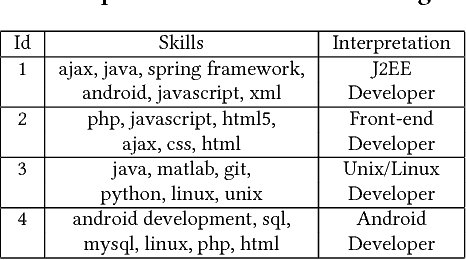

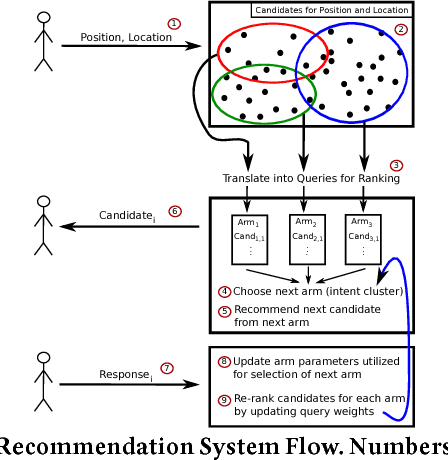
Abstract:Previous efforts in recommendation of candidates for talent search followed the general pattern of receiving an initial search criteria and generating a set of candidates utilizing a pre-trained model. Traditionally, the generated recommendations are final, that is, the list of potential candidates is not modified unless the user explicitly changes his/her search criteria. In this paper, we are proposing a candidate recommendation model which takes into account the immediate feedback of the user, and updates the candidate recommendations at each step. This setting also allows for very uninformative initial search queries, since we pinpoint the user's intent due to the feedback during the search session. To achieve our goal, we employ an intent clustering method based on topic modeling which separates the candidate space into meaningful, possibly overlapping, subsets (which we call intent clusters) for each position. On top of the candidate segments, we apply a multi-armed bandit approach to choose which intent cluster is more appropriate for the current session. We also present an online learning scheme which updates the intent clusters within the session, due to user feedback, to achieve further personalization. Our offline experiments as well as the results from the online deployment of our solution demonstrate the benefits of our proposed methodology.
Search by Ideal Candidates: Next Generation of Talent Search at LinkedIn
Feb 26, 2016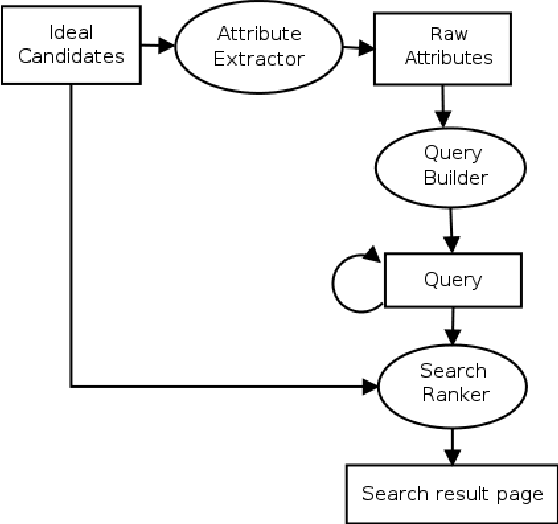
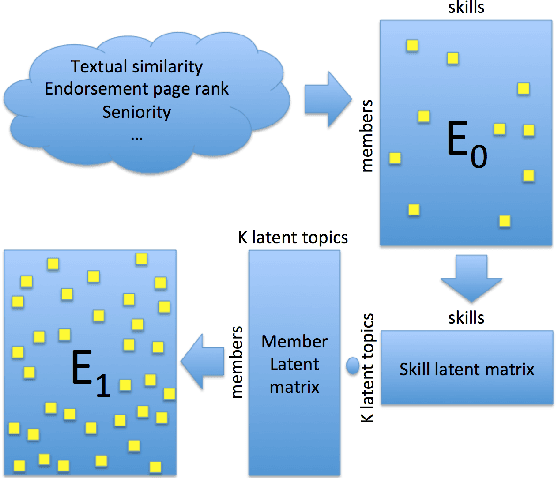
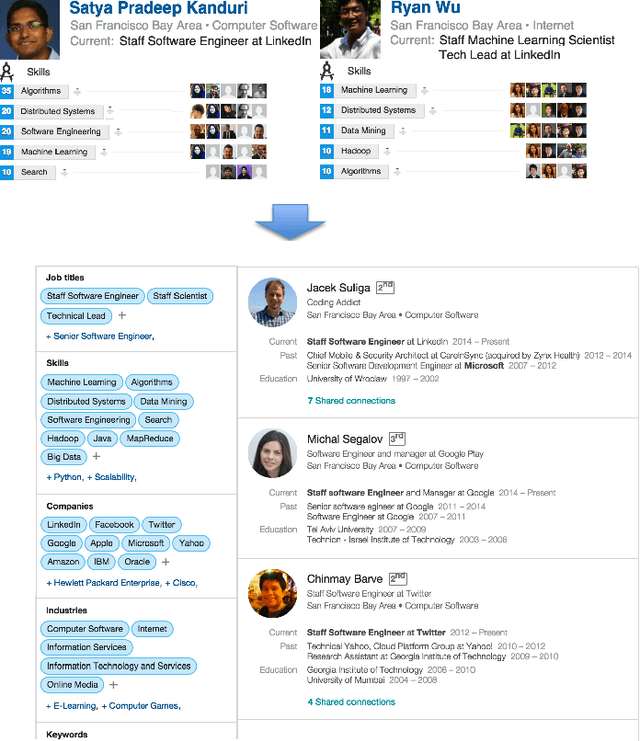
Abstract:One key challenge in talent search is how to translate complex criteria of a hiring position into a search query. This typically requires deep knowledge on which skills are typically needed for the position, what are their alternatives, which companies are likely to have such candidates, etc. However, listing examples of suitable candidates for a given position is a relatively easy job. Therefore, in order to help searchers overcome this challenge, we design a next generation of talent search paradigm at LinkedIn: Search by Ideal Candidates. This new system only needs the searcher to input one or several examples of suitable candidates for the position. The system will generate a query based on the input candidates and then retrieve and rank results based on the query as well as the input candidates. The query is also shown to the searcher to make the system transparent and to allow the searcher to interact with it. As the searcher modifies the initial query and makes it deviate from the ideal candidates, the search ranking function dynamically adjusts an refreshes the ranking results balancing between the roles of query and ideal candidates. As of writing this paper, the new system is being launched to our customers.
 Add to Chrome
Add to Chrome Add to Firefox
Add to Firefox Add to Edge
Add to Edge